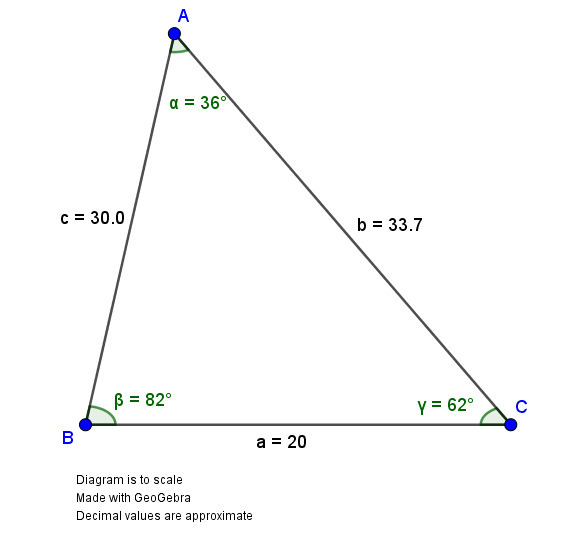𝛼 = Greek letter alpha (lowercase)
𝛽 = Greek letter beta (lowercase)
𝛾 = Greek letter gamma (lowercase)
𝛼 = 36°
𝛽 = unknown
𝛾 = 62°
𝛼 + 𝛽 + 𝛾 = 180
36 + 𝛽 + 62 = 180
98 + 𝛽 = 180
𝛽 = 180 - 98
𝛽 = 82°
Sides
a = 20
b = unknown
c = unknown
Angles
𝛼 = 36°
𝛽 = 82°
𝛾 = 62°
Law of Sines
sin(𝛼)/a = sin(𝛽)/b
sin(36)/20 = sin(82)/b
b*sin(36) = 20*sin(82)
b = 20*sin(82)/sin(36)
b = 33.6948933264092 approximately
b = 33.7
Please make sure your calculator is set to degree mode.
Also,
sin(𝛼)/a = sin(𝛾)/c
sin(36)/20 = sin(62)/c
c*sin(36) = 20*sin(62)
c = 20*sin(62)/sin(36)
c = 30.0432033439173 approximately
c = 30.0
The fully solved triangle is
𝛼 = 36°
𝛽 = 82°
𝛾 = 62°
a = 20
b = 33.7
c = 30.0
Diagram

Only one unique triangle is possible due to the AAS congruence theorem.